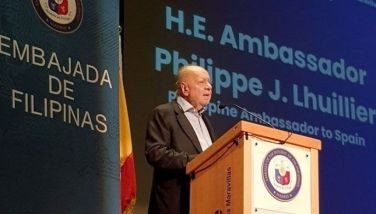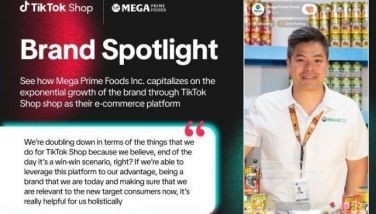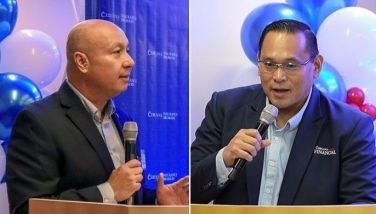Traffic inside cells and human disease
A single cell in our body transports all kinds of molecules in its different organelles for homeostasis and maximum survival. We can liken this to the horrendous traffic situation in major metropolitan cities like Metro Manila and even here in Iloilo City during daytime peak hours. People, animals, food and various commodities are being ferried in different vehicles across the various parts of the nation every day. Imagine how cargo molecules within the cell are synthesized, modified, and transferred from one organelle to another just like how vehicles ply a series of roads, highways, ports to factories, department stores, schools, houses, etc. Multiply these cells into billions in each of our organs that make up our organ-systems, which translates to the whole organism; in this case, Homo sapiens. In this article, I will attempt to simplify how cell trafficking occurs inside the cell and how this leads to disease.
The cell is composed of different organelles and the most important is the nucleus that contains our genetic material (DNA). It is where everything that makes us an organism is stored — from the color of our eyes and skin to our height, from our risk of dying of cancer to how long we live. It is located usually at the center part of the cell, and acts like the city hall, where it directs and controls all the activities of all the other organelles.
The nucleus is enclosed by a series of double-sided membranes that is very similar to the cell membrane that covers the entire cell. These barriers are also semi-permeable; that is, they are able to selectively traffic salts, sugars, and other molecules to and from the cell cytoplasm.
These series of membranes from the nuclear envelope extend to become the structure called the endoplasmic reticulum (ER), which acts as one of the pit stops for the cargo vesicles whose contents are processed to be sent to other parts of the cell. There are two kinds of ER, the rough ER (RER) and the smooth ER (SER). The former, together with another organelle, the ribosomes, is involved in the synthesis of proteins. They stitch together amino acids that form protein molecules that comprise the enzymes, structural proteins, and other proteins that are responsible for both the biochemical activities and structural integrity of the cell. The SER is mainly involved in synthesizing lipid and carbohydrate molecules.
As trafficking of vesicles proceeds from the ER onwards, these now merge with the Golgi apparatus (GA). These are a series of stack membranes that package, add more molecules to the proteins, and send the cargoes to their different destinations.
My work at the US National Institutes of Health was concentrated on how these cargo vesicles travel from one part of the cell to the other. I was trying to elucidate the roles of two molecules, BIG1 and BIG2 (Brefeldin A-inhibited Guanine-Exchange Protein 1 and Brefeldin A-inhibited Guanine-Exchange Protein 2) in cell trafficking. We found out that these are involved not only in the transfer of proteins, but BIG1, specifically, was also involved in nuclear trafficking. It played a role in transporting a special group of RNA molecules called small nucleolar RNA (snoRNA) to and from the nucleus.
Now, one might ask, why is this important? Numerous disease entities actually involve mutations that affect trafficking within the cells. The more common examples are Alzheimer’s disease, diabetes, prion diseases (mad cow disease), and bangungot (Brugada’s syndrome). Alzheimer’s disease is characterized by dementia-altered memory, behavior, and thinking. The brain in a patient with Alzheimer’s disease has plaques, proteinaceous molecules that accumulate due to a defect in a protein (presenilin 1) that transports amyloid to the plasma membrane. In diabetes type 2, characterized by an abnormally high amount of blood sugar, there could be a defect in the insulin receptor due to a functional defect or its retention in the ER. In prion diseases or mad cow disease, there is accumulation of the protein called prion due to changes in its tertiary structure. And lastly, in what is locally known as bangungot, but technically termed as Brugada’s syndrome, the patient typically dies in his sleep (mythically attributed to intense nightmares that lead to one’s death). In scientific literature however, it is due to a mutation of a protein (SCN5A) that is involved in sodium transport.
In conclusion, just like traffic logjams in cities, the cell can have traffic accidents, too. Accidents can occur with trucks, trains, transport vehicles being involved with cargoes delayed, spilled, and even mistakenly delivered to another destination. This holds true also of the cell — it can have cargo transport defects leading to disease.
* * *
Dr. Philip Ian P. Padilla is the current chairman of the Division of Biological Sciences, College of Arts and Sciences, and former director of the National Institute of Molecular Biology and Biotechnology, UP Visayas (UPV) in Miag-ao, Iloilo. He was a graduate of UPV (BS Biology, cum laude), UP Manila College of Medicine (MD), and Nagasaki University’s Institute of Tropical Medicine (Ph.D. Medical Science (Bacteriology). He was trained as a post-doctoral research fellow (Biochemistry and Cell Biology) at the Pulmonary-Critical Care Medicine Branch, National Heart, Lung, and Blood Institute, US National Institutes of Health, Bethesda, Maryland. He was invited back by Nagasaki University as a visiting professor of Molecular Epidemiology from 2009 to 2011. For comments, reactions or queries, e-mail him at [email protected].
- Latest

























